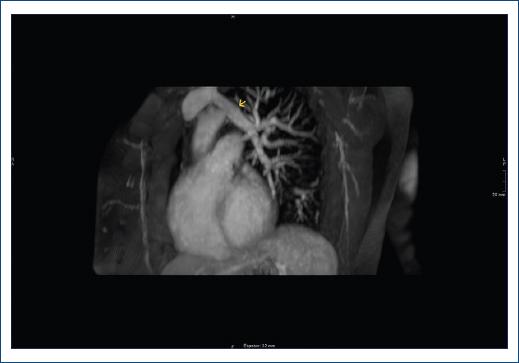Partial anomalous venous drainage (PAVD) is a congenital heart disease, in which part of the pulmonary venous return occurs at the level of the systemic circulation1. It is usually a late diagnosis entity given the absence of symptoms during the pediatric age, occasionally being an incidental finding. Although it can present as a single anomaly, association with aortic coarctation has been described, both isolated and in a syndromic entity such as Turner syndrome2.
Chronic volume overload at the level of the right cavities induces changes at the pulmonary endothelial level, which leads in the long term to the development of pulmonary hypertension and symptoms of the right heart failure. Given the slow progression of the disease, the therapeutic approach is complex, and it is necessary to assess clinical and hemodynamic repercussions, as well as patient preferences. We present the case of a patient who underwent a transthoracic echocardiogram in relation to dizziness triggered by intense exercise, a dilated right ventricle was observed, so it was decided to request a cardiac magnetic resource imaging. In it, PAVD is observed in which the left upper lobe vein drains at the level of the brachiocephalic venous trunk (commonly known innominate vein), with preserved RV function and Qp/Qs 1.4 (Figs. 1 and 2).

Figure 1 Oblique maximum intensity projection reconstruction contrast-enhanced magnetic resource imaging angiograph (arrow showing partial anomalous venous drainage).

Figure 2 Maximum intensity projection three-dimensional reconstruction contrast-enhanced magnetic resource imaging angiography (arrow showing the anomalous drainage).
The management of this type of defects, according to the literature, is individualized based on the symptoms and severity of the shunt, considering surgical correction in symptomatic patients with significant shunt (Qp/Qs > 2)3,4.











 text new page (beta)
text new page (beta)


